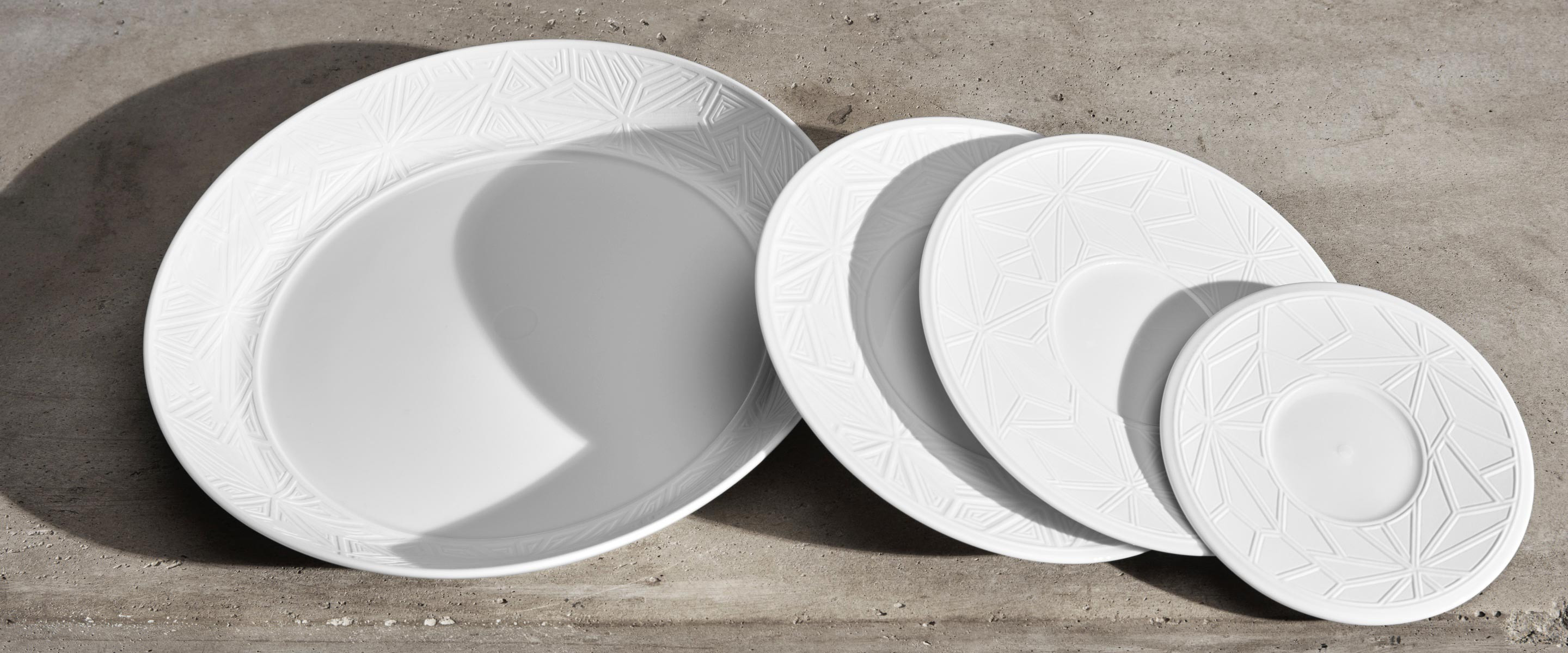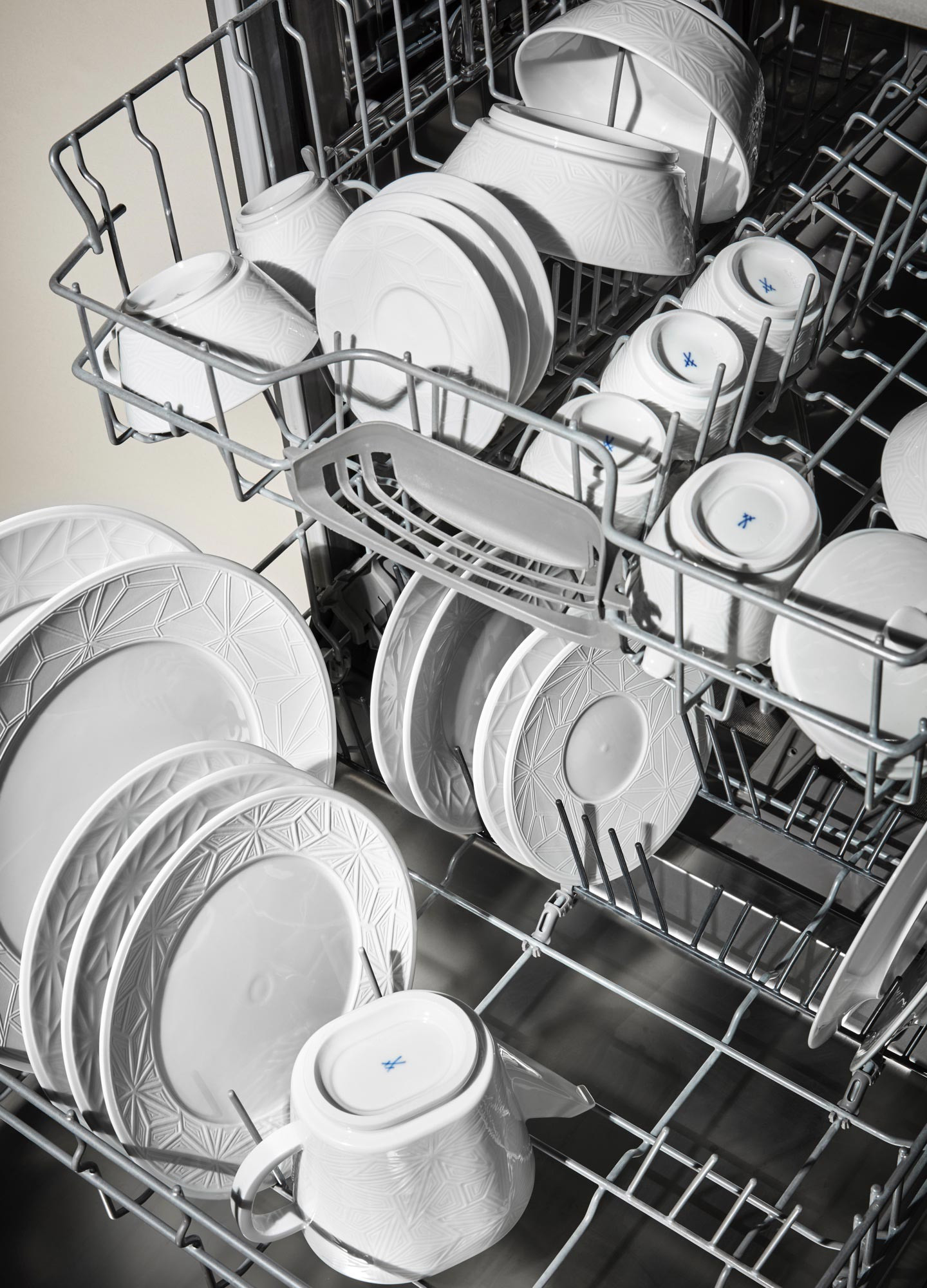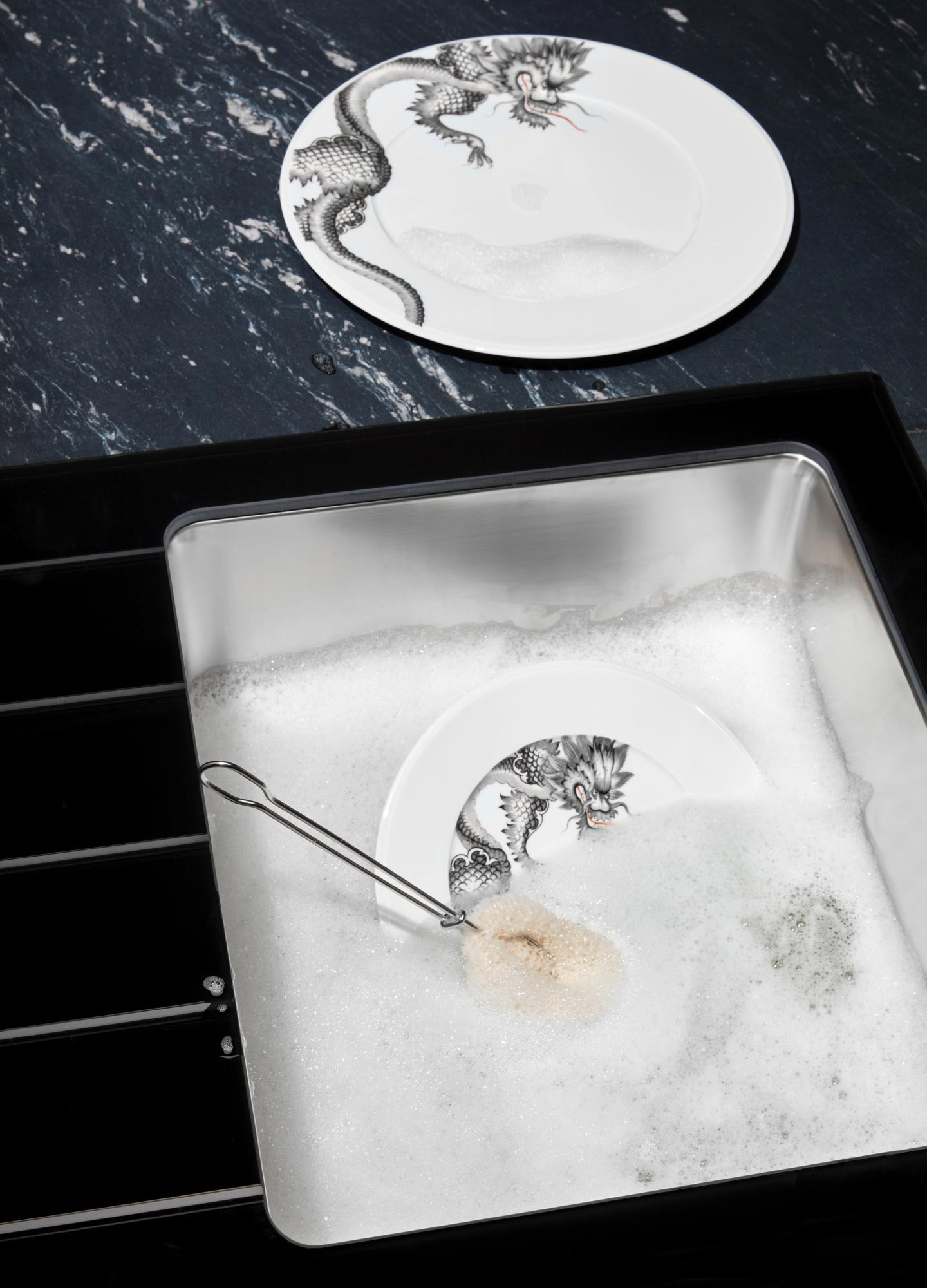Christmas Offer from MEISSEN – Enjoy Exclusive Savings! Learn More.
Skip to Content

- service
- Porcelain care
Porcelain care

Meissen Porcelain is made to love and made to last. It’s important to know how to best take care of your porcelain – each piece of Meissen Porcelain deserves the utmost attention and TLC to ensure a treasured purchase remains a prized possession for years to come.
Tableware
The majority of the manufactory’s tableware can be cleaned in the dishwasher: whether a product is dishwasher-resistant or not is marked online in the product description. Most pieces are also microwavable; this is also noted within each product description. Hand-painted crockery should be washed by hand and using a soft cloth.
Under-glaze and over-glaze differ entirely. Under-glaze, as the name suggests, is when paintwork is applied before the porcelain is glazed and glost fired at 1400°C. The glaze effectively protects the hand-painted décor, making the final product suitable for the dishwasher. Over-glaze, however, is where paintwork is applied directly to white, glazed and glost fired porcelain – fired instead as a rule at approx. 900°C. Often several firings are required. These pieces are as such never suitable for the dishwasher and should be cleaned by hand. There is also such a thing as in-glaze decoration, whereby the firing temperate is at approx. 1100°C, making for a stronger connection, as it were, between paint and glaze. As a rule, such pieces tend to be dishwasher-suitable.
Bisque
A note on bisque porcelain tableware: although glaze-free, bisque surfaces are non-porous and boast similar properties to glazed hard porcelain in terms of hardness, stability and resistance to abrasion. The particular, soft-and-silky feel is obtained after firing at approx. 1400°C through a special polishing process. The final product is microwavable, dishwasher-proof and even resistant to stubborn dirt from acidic matters or those containing dyes. It is through careful hand grinding that the previously rough bisque surfaces are planed, meaning dirt has nowhere to remain.
Figures and figurines
To clean porcelain figurines, simply use a damp cloth or duster to remove dust or dirt, paying close attention to filigree parts such as petals, leaves or fingers. For antique pieces, we would not recommend allowing the porcelain to come into contact with water, as this could leave repairs loosened.
Tableware
The majority of the manufactory’s tableware can be cleaned in the dishwasher: whether a product is dishwasher-resistant or not is marked online in the product description. Most pieces are also microwavable; this is also noted within each product description. Hand-painted crockery should be washed by hand and using a soft cloth.
Under-glaze and over-glaze differ entirely. Under-glaze, as the name suggests, is when paintwork is applied before the porcelain is glazed and glost fired at 1400°C. The glaze effectively protects the hand-painted décor, making the final product suitable for the dishwasher. Over-glaze, however, is where paintwork is applied directly to white, glazed and glost fired porcelain – fired instead as a rule at approx. 900°C. Often several firings are required. These pieces are as such never suitable for the dishwasher and should be cleaned by hand. There is also such a thing as in-glaze decoration, whereby the firing temperate is at approx. 1100°C, making for a stronger connection, as it were, between paint and glaze. As a rule, such pieces tend to be dishwasher-suitable.
Bisque
A note on bisque porcelain tableware: although glaze-free, bisque surfaces are non-porous and boast similar properties to glazed hard porcelain in terms of hardness, stability and resistance to abrasion. The particular, soft-and-silky feel is obtained after firing at approx. 1400°C through a special polishing process. The final product is microwavable, dishwasher-proof and even resistant to stubborn dirt from acidic matters or those containing dyes. It is through careful hand grinding that the previously rough bisque surfaces are planed, meaning dirt has nowhere to remain.
Figures and figurines
To clean porcelain figurines, simply use a damp cloth or duster to remove dust or dirt, paying close attention to filigree parts such as petals, leaves or fingers. For antique pieces, we would not recommend allowing the porcelain to come into contact with water, as this could leave repairs loosened.
X
Subscribe to the newsletter
Get 10% discount* on your next online order
Meissen stores
near you
Contact us
Do you have questions about the manufactory, our product range or special designs - we are happy to advise you!
Consultation hours:
Mon-Fri: 9am - 6pm
Sat: 10am - 4pm
X







